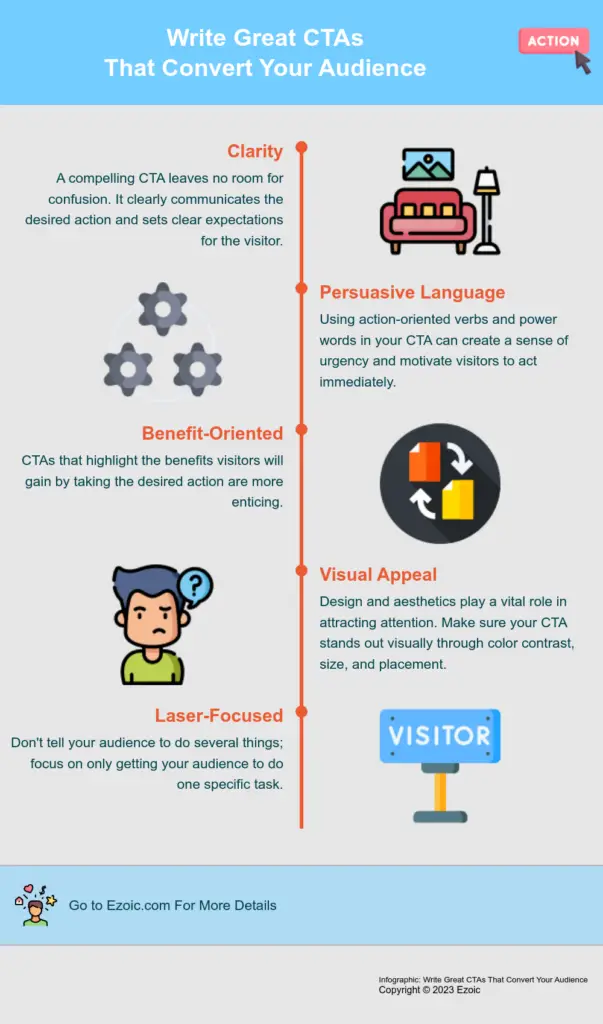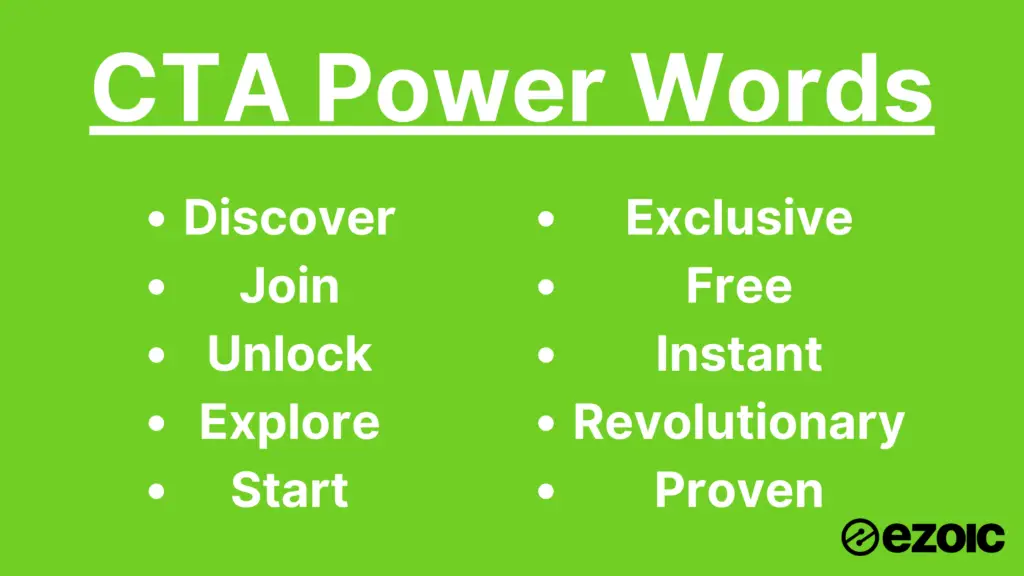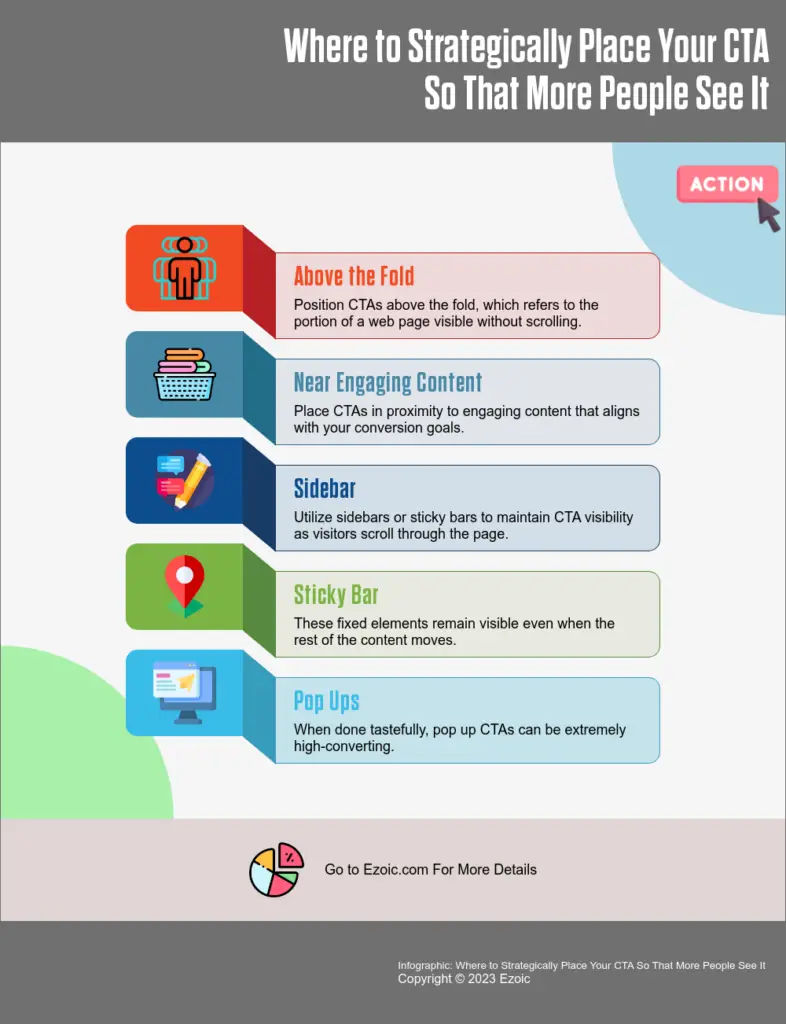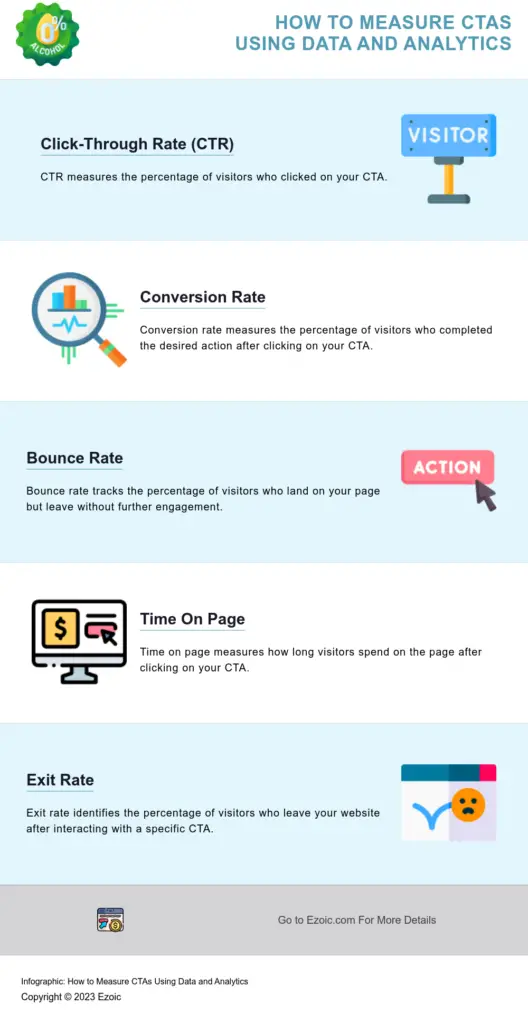
How to Write An Irresistible CTA to Get More Subscribers, Followers, and Revenue

Get helpful updates in your inbox
Having good calls to action (CTA) can literally make or break a website’s success. If you can get your audience to do something — click a button, buy a product, read an article, forward an email — you can have a successful business. But if you can’t get your audience to take action, your website will probably never reach its full potential.
There are plenty of high-quality sites with great content, created by great people, with an important message…that never reach people. Since the site owners have not taken the time to understand the “business” of creating content (i.e. creating calls to action that get results), they never really see the success they want. As best-selling author Robert Kiyosaki once quipped, “It’s not ‘best-author,’ it’s best-selling author.” Selling matters. Getting your audience to take action matters.
Here’s how to write irresistible calls to action that will help your site get more subscribers, followers, and revenue.
Understanding Calls to Action (CTAs)
Calls to Action are crucial components of a website’s conversion strategy. They serve as powerful tools to guide visitors towards taking specific actions, such as subscribing to an email list, making a purchase, or following on social media. In this segment, we will delve into the importance of understanding CTAs, explore their definition and purpose, discuss key elements that make CTAs compelling, and provide examples of effective CTAs.
Calls to Action are concise and compelling messages that prompt users to take a desired action. They are typically presented as buttons, links, or forms and strategically placed within a website’s content. The purpose of CTAs is to motivate visitors to engage further, convert into customers, or achieve specific goals.
Whatever action you’re trying to get your audience to take, there are several key elements of crafting a compelling CTA:
- Clarity: A compelling CTA leaves no room for confusion. It clearly communicates the desired action and sets clear expectations for the visitor.
- Persuasive Language: Using action-oriented verbs and power words in your CTA can create a sense of urgency and motivate visitors to act immediately. For example, “Start your free trial now” or “Unlock exclusive access today.”
- Benefit-Oriented: CTAs that highlight the benefits visitors will gain by taking the desired action are more enticing. Focus on how the action will improve their lives, solve a problem, or fulfill a need.
- Visual Appeal: Design and aesthetics play a vital role in attracting attention. Make sure your CTA stands out visually through color contrast, size, and placement, while maintaining consistency with your brand’s visual identity.
I myself have used and experimented with countless CTAs over the years. Here are some examples that have really helped my audience take action that are concise, simple, and effective:
- “Join Our VIP Newsletter and Get 10% Off Your First Order” — This CTA appeals to the visitor’s desire for exclusive benefits and offers a discount as an incentive.
- “Download Your Free E-Book Now and Unleash Your Creativity” — By emphasizing the value of a free e-book and the potential benefits it offers, this CTA entices visitors to take action.
- “Limited Time Offer: Sign up for Early Access” — This CTA creates a sense of urgency and scarcity, compelling visitors to act quickly to secure an exclusive opportunity.
- “Get Started with Our 30-Day Money-Back Guarantee” — By highlighting the money-back guarantee, this CTA alleviates concerns and encourages visitors to take a risk-free action.
Understanding the fundamental aspects of CTAs is pivotal to improving website conversions. By crafting compelling CTAs with clear messaging, persuasive language, and visual appeal, website owners can motivate visitors to take desired actions and achieve their conversion goals.

In the next segment, we will discuss the importance of identifying specific conversion goals for email lists, sales pages, subscriber counts, and social media channels, and how to align CTAs with those goals effectively.
Identifying Your Conversion Goals
A. Defining specific conversion goals for email lists, sales pages, subscriber counts, and social media channels B. Importance of aligning CTAs with conversion goals C. Case studies highlighting successful CTA-goal alignment
If you want to reach your goals, you have to define them first. What does “success” mean to you? What does it mean for your CTA to work, or to fail?
To make the most of your CTAs, it’s essential to define specific conversion goals for different aspects of your online presence, including email lists, sales pages, subscriber counts, and social media channels. Let’s explore the significance of aligning CTAs with these goals and examine real-life case studies that highlight successful CTA-goal alignment.
Each aspect of your online presence serves a distinct purpose, and it’s crucial to identify specific conversion goals for each one. For example, your email list goal might be to increase subscriber engagement and nurture leads, while your sales page goal could be to drive direct purchases or generate inquiries. Similarly, your social media channels may aim to increase brand visibility and engagement, while your subscriber count goal might revolve around growing your audience for content distribution.
Aligning your CTAs with your conversion goals ensures that you guide visitors towards the desired actions that will ultimately lead to conversion. When your CTA message resonates with your goal, it creates a clear path for visitors, minimizing confusion and maximizing the chances of achieving your objectives. By aligning CTAs with your conversion goals, you create a cohesive and purpose-driven user experience that encourages engagement and drives results.
Email List Engagement: Plenty of companies have seen massive success in email marketing and sales conversion through effective CTAs. Here are some real-life examples:
HubSpot:
HubSpot, a marketing software company, implemented effective CTAs throughout their website to generate leads and drive conversions. They conducted extensive A/B testing to optimize their CTAs, including color, placement, and wording. By refining their CTAs based on data-driven insights, HubSpot increased their lead generation by 60%.
Airbnb:
Airbnb, an online marketplace for vacation rentals, used persuasive CTAs to encourage user engagement. They prominently displayed “Book Now” buttons on their website, making it easy for users to take immediate action. Additionally, they incorporated personalized CTAs in email campaigns, resulting in a 300% increase in booking rates.
Dropbox:
Dropbox, a cloud storage provider, implemented a highly effective CTA strategy. They offered users additional storage space by referring friends to join the service. Dropbox placed a prominent CTA button on their website, encouraging users to invite their contacts. This referral program significantly contributed to Dropbox’s user growth, with a reported 3900% increase in registered users over a 15-month period.
Amazon:
Amazon, the global e-commerce giant, effectively utilizes CTAs to drive sales. They strategically place “Add to Cart” and “Buy Now” buttons on product pages, making it simple for customers to make purchases. Amazon also employs personalized CTAs based on user browsing and purchase history, increasing the relevance and effectiveness of their calls-to-action.
Slack:
Slack, a popular team collaboration tool, leveraged CTAs to expand their user base. They introduced a “Get Started” button on their homepage, allowing potential customers to sign up and start using the platform immediately. By simplifying the onboarding process and guiding users towards taking action, Slack experienced rapid growth and amassed millions of active users.
Here’s a tried-and-true CTA I used to put at the bottom of my articles, inviting my audience to watch a training in exchange for their email. It was wildly successful, and helped me get thousands of subscribers in just a few months:
Sales Page Conversions: An e-commerce website could aim to boost sales on a specific product page. By incorporating CTAs such as “Add to Cart and Get 20% Off Today” and “Limited Stock, Act Now,” they can align their CTAs with the goal of creating a sense of urgency and emphasizing the value proposition. This strategic alignment can lead to a considerable increase in conversions and revenue.
Social Media Engagement: A fashion brand could want to enhance engagement on their social media channels. By utilizing CTAs like “Join the conversation and follow us for the latest trends” and “Tag us in your style for a chance to be featured,” they align their CTAs with the goal of encouraging user-generated content and fostering a sense of community. This could result in a significant increase in follower count, user interactions, and brand advocacy.
Defining specific conversion goals for different aspects of your online presence and aligning your CTAs with these goals is key to maximizing conversions. By tailoring your CTAs to resonate with your objectives, you create a compelling user experience that motivates visitors to take action. Take the time to evaluate your conversion goals, craft persuasive CTAs, and watch as your website achieves remarkable results.
Crafting High-Converting CTAs
Calls to Action (CTAs) play a pivotal role in driving conversions on your website. To create CTAs that truly resonate with your audience and drive action, it’s essential to understand the key elements that make them compelling. In this section, we’ll explore the power of clear and concise language, action-oriented verbs, power words, creating urgency and scarcity, designing visually appealing CTAs, and incorporating persuasive techniques.
When crafting CTAs, clarity is paramount. Use concise language that clearly communicates the desired action. Avoid jargon or complex phrases that may confuse visitors. For example, instead of saying “Click here to learn more about our services,” a clearer and more concise CTA would be “Discover our services.” Usually, less is better. As Mark Twain famously remarked to a friend, “I apologize for such a long letter — I didn’t have time to write a short one.” It takes time and effort to shorten your message to the bare meaning.
To ignite a sense of motivation and drive action, incorporate action-oriented verbs and power words in your CTAs. For instance, use words like “Discover,” “Join,” “Unlock,” “Explore,” “Get,” or “Start.” Combine them with power words that evoke emotions or highlight value, such as “Exclusive,” “Free,” “Instant,” “Revolutionary,” or “Proven.” These “power words” are proven tools that help audiences take action using specific language to create urgency and excitement.
Speaking of urgency, by creating a sense of urgency and scarcity in your CTAs, you tap into the fear of missing out (FOMO) and drive immediate action. Include phrases like “Limited Time Offer,” “Act Now,” “Only X Spots Left,” or “Don’t Miss Out.” By instilling a sense of urgency, you motivate visitors to take action quickly.

The visual appeal of your CTAs is crucial in capturing visitors’ attention and encouraging interaction. Use contrasting colors that stand out from the rest of the page, ensuring your CTA is easily visible. Make it visually appealing by incorporating eye-catching design elements such as arrows, icons, or bold typography. Consider the overall aesthetic of your website to maintain brand consistency.
To make your CTAs more persuasive, consider employing persuasive techniques such as social proof, testimonials, or guarantees. For example, you can include phrases like “Join thousands of satisfied customers,” “See what others are saying,” or “Try risk-free with our money-back guarantee.” These techniques help build trust and alleviate any hesitations visitors may have.
Crafting compelling CTAs is a vital aspect of driving conversions on your website. By utilizing clear and concise language, action-oriented verbs, power words, urgency and scarcity, visually appealing design, and persuasive techniques, you can create CTAs that captivate your audience and inspire them to take action.
Experiment with different strategies, test the performance of your CTAs, and refine them based on data and user feedback. With these techniques, you’ll be well on your way to creating high-converting CTAs that propel your website’s success.
Placement and Visibility of CTAs
There’s an old business parable that goes like this. A man whose car broke down took it to an auto shop owned by a long-time mechanic. After a few minutes of analyzing the car, the mechanic took a hammer and carefully, expertly whacked the engine. The car sprang to life, everything fixed. He then wrote out the bill for a thousand dollars.
The car owner couldn’t believe it. A thousand dollars for a simple hammer hit??
Yes, the mechanic replied. Ten dollars for the hammer hit, and $990 for knowing where to hit.
The strategic placement of Calls to Action (CTAs) and optimizing their visibility is crucial for maximizing conversions on your website. In this segment, we will explore the importance of strategic CTA placement, utilizing different CTA formats, and leveraging A/B testing to optimize CTA visibility and effectiveness.
Strategically placing CTAs on web pages ensures that they are visible and easily accessible to visitors. You want to make sure your CTA is visible, but not annoyingly so; centerstage, but not the focus of your site. Consider the following placement tips:
- Above the Fold: Position CTAs above the fold, which refers to the portion of a web page visible without scrolling. This prime real estate grabs visitors’ attention immediately and encourages engagement.
- Near Engaging Content: Place CTAs in proximity to engaging content that aligns with your conversion goals. For example, if you have a blog post discussing a product, include a CTA at the end of the post that directs readers to make a purchase or learn more.
- Sidebar or Sticky Bar: Utilize sidebars or sticky bars to maintain CTA visibility as visitors scroll through the page. These fixed elements remain visible even when the rest of the content moves.

Diversifying CTA formats helps cater to different user preferences and enhances their overall visibility. Not just any old plain text will do. Consider the following formats, all of which can be highly effective as CTA mediums:
- Buttons: Use visually appealing buttons with contrasting colors that stand out. Place them strategically within content, at the end of blog posts, or in prominent locations such as the header or sidebar.
- Banners: Implement attention-grabbing banners at the top or bottom of web pages. These can be full-width or partial-width, offering ample space to convey your CTA message effectively.
- Inline Text: Embed CTAs within the body of your content using hyperlinked text. Make sure the text is contextual, relevant, and enticing to encourage users to take action.
- Pop-ups and Modals: Employ timed or exit-intent pop-ups and modals to capture visitors’ attention at critical moments. Use them sparingly and ensure they provide value or an incentive that aligns with your conversion goals.
My suggestion? Experiment. Try different banners, logos, colors, wording. There are massive departments at global corporations who spend months deciding exactly what shade of red to make phone notifications and exactly how many pixels they have. These small things matter, and the best way to find what works for you is to try a lot of options.
A/B testing is a powerful technique for optimizing CTA placement and visibility. Split your website’s traffic and test different variations of CTAs to measure their effectiveness. Consider testing different placement options, formats, colors, text, and overall design. Analyze the data to identify the most effective CTAs and make data-driven decisions to enhance conversion rates.
Strategically placing CTAs on web pages, utilizing different formats, and optimizing their visibility through A/B testing are essential steps in boosting conversions on your website. Experiment with different placements, formats, and variations of CTAs to find the most effective combination for your audience.
Remember to track and analyze the data to make informed decisions that drive optimal results. By optimizing CTA placement and visibility, you’ll enhance user experience, capture visitors’ attention, and increase your chances of achieving your conversion goals.
Optimizing CTAs for Mobile Users
With the increasing use of mobile devices, it is vital to prioritize mobile responsiveness when it comes to Calls to Action (CTAs) on your website. Let’s explore the importance of mobile responsiveness for CTAs, design considerations for mobile CTAs, and techniques to improve their performance on small screens.
Mobile responsiveness is crucial because a significant portion of website traffic comes from mobile devices. Ensuring that your CTAs are optimized for mobile devices is essential for providing a seamless user experience. Failing to do so can result in frustrated users, missed conversion opportunities, and lower engagement rates.
B. Design Considerations for Mobile CTAs: When designing CTAs for mobile devices, keep the following considerations in mind:
- Size and Visibility: Make sure your CTAs are large enough to be easily tapped with a finger. Avoid placing them too close together to prevent accidental clicks. Ensure high contrast between the CTA and the background to enhance visibility.
- Simplified Design: Mobile screens have limited space, so simplify the design of your CTAs. Use clear and concise messaging, and avoid clutter. Stick to essential elements and avoid unnecessary distractions.
- Placement: Optimize the placement of CTAs on mobile screens, considering the natural flow of the user’s thumb. Place CTAs within thumb reach to make them easily accessible and reduce the need for excessive scrolling.
Mobile users have a very different experience than desktop users. To enhance the performance of CTAs on mobile devices, we recommend implementing the following techniques:
- Clear and Actionable Language: Use concise and action-oriented language that clearly communicates the desired action. Make it easy for users to understand what they should do when they encounter the CTA.
- Optimized Loading Speed: Mobile users have little patience for slow-loading pages. Ensure that your CTAs and the pages they lead to load quickly on mobile devices. Optimize images, reduce server response time, and leverage caching techniques.
- Finger-Friendly CTAs: Design CTAs with touch-friendly elements. Use larger buttons with sufficient spacing around them to minimize accidental clicks. Incorporate visual cues, such as shadows or animations, to indicate the interactive nature of the CTA.
- Responsive Design: Implement responsive design principles to adapt CTAs to various screen sizes and orientations. This ensures that CTAs remain visually appealing and functional across a range of mobile devices.
Mobile responsiveness is vital for CTAs to effectively engage mobile users and drive conversions. By considering design considerations specific to mobile devices and implementing techniques to enhance mobile CTA performance, you can optimize the user experience and maximize conversion rates.
Prioritize mobile responsiveness, test different design approaches, and monitor analytics to continuously refine and improve your mobile CTAs. By doing so, you will position your website for success in capturing and converting mobile traffic.
Monitoring and Analyzing CTA Performance
To truly understand and enhance the effectiveness of your Calls to Action (CTAs), it is essential to leverage analytics tools that provide valuable insights. In this segment, we will explore the significance of tracking CTA performance using analytics tools, identify and interpret key CTA metrics, and discuss how to make data-driven adjustments to improve CTA effectiveness.
Analytics tools like Ezoic’s Big Data Analytics (BDA) offer valuable data and metrics to track the performance of your CTAs. By implementing these tools, you gain insights into user behavior, engagement, and conversion rates. Some other analytics tools include Google Analytics, Kissmetrics, and Mixpanel. Tracking CTA performance enables you to make informed decisions to optimize your CTAs and drive higher conversions.
To assess the effectiveness of your CTAs, it is crucial to identify and interpret key metrics. Some essential CTA metrics to monitor include:
- Click-Through Rate (CTR): CTR measures the percentage of visitors who clicked on your CTA. A higher CTR indicates greater engagement and interest in your offer.
- Conversion Rate: Conversion rate measures the percentage of visitors who completed the desired action after clicking on your CTA. This action could be making a purchase, filling out a form, or subscribing to a newsletter.
- Bounce Rate: Bounce rate tracks the percentage of visitors who land on your page but leave without further engagement. A high bounce rate may indicate a mismatch between the CTA and the content or a lack of relevance.
- Time on Page: Time on page measures how long visitors spend on the page after clicking on your CTA. A longer time on page suggests that visitors are actively engaged with the content.
- Exit Rate: Exit rate identifies the percentage of visitors who leave your website after interacting with a specific CTA. A high exit rate may indicate a lack of interest or a need for improvement in the CTA design or placement.
- A/B Testing: Conduct A/B tests by creating different variations of your CTAs and comparing their performance. Test elements such as design, placement, messaging, colors, and size. Analyze the data to determine the most effective CTA variation.
- Heatmap Analysis: Utilize heatmap tools to visualize user engagement and behavior on your website. Identify areas of high interaction and adjust your CTAs accordingly. Heatmaps provide valuable insights into how users engage with your CTAs and can inform design and placement decisions.
- Continuous Monitoring and Optimization: Regularly monitor CTA performance and review analytics data. Identify trends, patterns, and areas for improvement. Make iterative adjustments based on data analysis to continually optimize your CTAs.

Tracking CTA performance using analytics tools and interpreting key metrics empowers you to make data-driven decisions to enhance CTA effectiveness. By understanding the importance of each metric, conducting A/B tests, analyzing heatmaps, and continuously monitoring performance, you can make targeted adjustments that drive higher engagement, click-through rates, and conversions. Leverage the power of data to optimize your CTAs and unlock the full potential of your website’s conversion potential.
Testing and Iterating CTAs
Once you have your system up and running, it’s crucial to begin experimenting and seeing what works. It’s rare to have a CTA consistently convert at a high-level; that’s why companies are always updating their content and CTAs, making new copy and trying out new ideas to see what works that week or month.
Creating high-converting Calls to Action (CTAs) is an iterative process that requires continuous improvement and optimization. Here’s the importance of conducting split tests to compare different CTAs, analyzing test results, and iterating CTAs based on data. We will also discuss strategies for continuous improvement and optimization of CTAs.
Split testing, also known as A/B testing, allows you to compare the performance of different CTAs simultaneously. It involves creating two or more versions of a CTA and directing equal portions of your traffic to each variation. By measuring the performance of each variation, you can identify the most effective CTA.
Analyzing the test results is critical for understanding which elements of a CTA are driving better conversions. Here’s a basic step-by-step guide on how to analyze and tweak your CTAs:
Step 1: Define Key Metrics: Identify the key metrics that align with your conversion goals. This could include click-through rate, conversion rate, bounce rate, or time on page.
Step 2: Measure Statistical Significance: Ensure that you have a sufficient sample size to achieve statistical significance. The larger the sample size, the more reliable your test results will be.
Step 3: Analyze Your Findings: Compare the performance of each CTA variation based on the key metrics. Identify patterns and trends to understand which elements are positively impacting conversions.
Step 4: Identify Winning Variation: Determine the winning variation based on the test results. The winning variation is the one that performs significantly better in terms of the desired metrics.
Step 5: Repeat as Needed
Once you have a strong system of experimenting with different CTAs, you must continually optimize and improve them to stay relevant over time.
Use the insights gained from split tests to iterate and refine your CTAs. Make incremental changes to elements such as design, color, text, placement, and size, based on data-backed insights. You can also test one variable at a time to isolate the impact of specific changes. This approach helps you understand which elements contribute most to improved performance.
Then, pay attention to user feedback, such as comments, surveys, or customer support interactions. User feedback can provide valuable insights into user preferences and pain points. Be sure to stay updated with trends that come and go; keep an eye on industry trends and emerging best practices for CTAs. Stay updated with changes in user behavior and preferences to ensure your CTAs remain relevant and effective.
Implement a cycle of continuous measurement and optimization. Regularly monitor and analyze CTA performance, make adjustments based on data insights, and repeat the process to achieve ongoing improvements.
Conducting split tests, analyzing test results, and continuously optimizing CTAs are essential for driving higher conversions on your website. By utilizing data-driven insights, iterating based on test results, and implementing continuous improvement strategies, you can fine-tune your CTAs to align with user preferences and maximize conversion rates. Embrace the iterative nature of CTA optimization, and leverage the power of split testing to unlock the full potential of your CTAs.
Conclusion
Mastering the art of writing irresistible calls to action (CTAs) is a game-changer for website owners. The importance of high-converting CTAs cannot be overstated, as they have the potential to significantly impact the success of a business. Without effective CTAs, even the most remarkable websites with great content and important messages may never reach their full potential.
Understanding the fundamental aspects of CTAs is the first step towards crafting compelling and persuasive messages. Clarity is key, as a CTA should leave no room for confusion and clearly communicate the desired action. By using persuasive language, incorporating action-oriented verbs and power words, and highlighting the benefits visitors will gain, you can create a sense of urgency and motivation.
Visual appeal is another crucial factor in capturing visitors’ attention. Design your CTAs with contrasting colors, proper placement, and consistency with your brand’s visual identity. By making your CTAs visually appealing, you enhance their visibility and increase the chances of attracting engagement.
Aligning your CTAs with specific conversion goals is a strategic approach that drives optimal results. Whether it’s increasing email list engagement, boosting sales on product pages, or enhancing social media engagement, aligning CTAs with goals creates a clear path for visitors to follow and maximizes the chances of conversion.
Crafting high-converting CTAs requires careful attention to language, urgency, and design. Use clear and concise language, action-oriented verbs, and power words to motivate visitors. Incorporate urgency and scarcity to tap into the fear of missing out. Finally, design visually appealing CTAs that stand out and align with your brand’s visual identity.
By mastering the art of writing irresistible CTAs, website owners can unlock the potential to gain more subscribers, followers, and revenue. Don’t underestimate the power of a well-crafted CTA. It’s the catalyst that transforms a website from good to great and propels it towards success. Start implementing these techniques today and watch as your website achieves remarkable results.

Anthony Moore is a writer, speaker, and coach. He's helped hundreds of entrepreneurs create successful businesses, and has gained over 7 million views for his work on entrepreneurship, personal growth, and productivity.
Featured Content
Checkout this popular and trending content

Ranking In Universal Search Results: Video Is The Secret
See how Flickify can become the ultimate SEO hack for sites missing out on rankings because of a lack of video.
Announcement

Ezoic Edge: The Fastest Way To Load Pages. Period.
Ezoic announces an industry-first edge content delivery network for websites and creators; bringing the fastest pages on the web to Ezoic publishers.
Launch

Ezoic Unveils New Enterprise Program: Empowering Creators to Scale and Succeed
Ezoic recently announced a higher level designed for publishers that have reached that ultimate stage of growth. See what it means for Ezoic users.
Announcement
